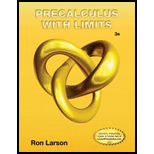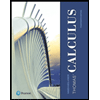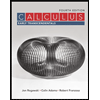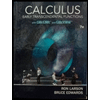
To find: The solution set for the given inequality.
Answer to Problem 18E
Solution set:
(−1,7) .

Explanation of Solution
Given information:
An inequality is given as - x2−6x+9<16 .
Concept used:
Key numbers of a polynomial are its zeros. Real zeros of a polynomial divides real line into intervals in which the polynomial does not change its sign. A test value is taken from each interval and corresponding value of inequality is calculated (whether positive or negative). The inequality maintains same sign for whole interval.
Calculation:
Given inequality is - x2−6x+9<16
⇒x2−6x+9−16<0⇒x2−6x−7<0⇒x2+x−7x−7<0⇒(x+1)(x−7)<0
Key numbers are −1,7 .
| Test interval | Test x− value | Polynomial value x2−6x−7<0 | Conclusion |
| (−∞,−1) | x=−2 | (−2)2−6(−2)−7=9 | Positive |
| (−1,7) | x=0 | 02−6(0)−7=−7 | Negative |
| (7,∞) | x=5 | (5)2−6(5)−7=−12 | Positive |
From above table, it can be concluded that inequality is satisfied in the open intervals (−1,7) .
Hence, solution set for the given inequality will be (−1,7) .
Graph of the solution set is drawn below.

Chapter 2 Solutions
Precalculus with Limits
- This table displays the current in equal intervals. Time t/ms 05 10 15 20 25 30 Current i/A 0 4.8 9.1 12.7 8.8 3.5 0 The formula for the charge as follows: 30x10-3 q 0 i dt Use formula to solve the current at 30ms using both the trapezoidal rule and Simpson's rule showing all steps and workingarrow_forwardTable displays the current in equal intervals. Charge formula: Time t/m 05 10 15 20 25 30 Current i/A 0 4.8 9.1 12.7 8.8 3.5 0 9 = 70 30x10-3 i dt Using mid-ordinate rule solve for the current at 30ms.arrow_forwardEvaluate 5 k=0 7 2. karrow_forward
- Pls help asap pls.arrow_forward9. Consider the function y = 2e¯*. Determine the equation of the tangent(s) to the curve that pass through the point P(2, 0). Your final answer must be expressed in standard form as per other tests. Negative exponents and/or fractions must not appear in your final answer. For full marks please draw an accurate sketch to support your solution.arrow_forward6. The graph below shows f, f'and fƒ" Clearly Label the curves.arrow_forward
 Calculus: Early TranscendentalsCalculusISBN:9781285741550Author:James StewartPublisher:Cengage Learning
Calculus: Early TranscendentalsCalculusISBN:9781285741550Author:James StewartPublisher:Cengage Learning Thomas' Calculus (14th Edition)CalculusISBN:9780134438986Author:Joel R. Hass, Christopher E. Heil, Maurice D. WeirPublisher:PEARSON
Thomas' Calculus (14th Edition)CalculusISBN:9780134438986Author:Joel R. Hass, Christopher E. Heil, Maurice D. WeirPublisher:PEARSON Calculus: Early Transcendentals (3rd Edition)CalculusISBN:9780134763644Author:William L. Briggs, Lyle Cochran, Bernard Gillett, Eric SchulzPublisher:PEARSON
Calculus: Early Transcendentals (3rd Edition)CalculusISBN:9780134763644Author:William L. Briggs, Lyle Cochran, Bernard Gillett, Eric SchulzPublisher:PEARSON Calculus: Early TranscendentalsCalculusISBN:9781319050740Author:Jon Rogawski, Colin Adams, Robert FranzosaPublisher:W. H. Freeman
Calculus: Early TranscendentalsCalculusISBN:9781319050740Author:Jon Rogawski, Colin Adams, Robert FranzosaPublisher:W. H. Freeman
 Calculus: Early Transcendental FunctionsCalculusISBN:9781337552516Author:Ron Larson, Bruce H. EdwardsPublisher:Cengage Learning
Calculus: Early Transcendental FunctionsCalculusISBN:9781337552516Author:Ron Larson, Bruce H. EdwardsPublisher:Cengage Learning





